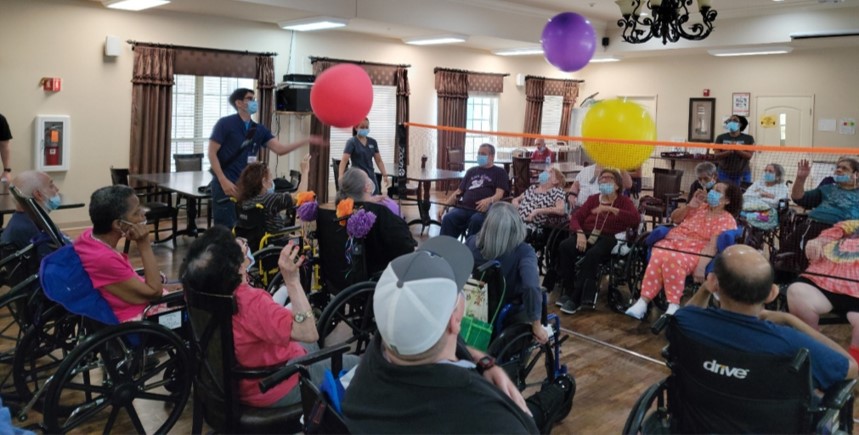By Joshua Mimun, OT Student, University of St. Augustine: Austin Campus
Here at Hunter’s Pond in San Antonio, Texas, group therapy takes on a bigger form. Daily large-group therapy sessions with approximately 20 to 30 qualified residents led by 10 to 12 therapists and therapy assistants perform interventions that promote increased AROM, activity tolerance, and dynamic balance while providing opportunities for social engagement. Below, we see patients actively participating in balloon volleyball as the therapists/therapy assistants referee the skilled group intervention to ensure progression of each client toward their individualized goals. Additional interventions include bean bag hot potato, large foam beading relay race, big ball basketball, bowling/cornhole combo, and more!
The benefits of group therapy can be traced all the way back to 1905, with the successful treatment of TB patients by psychologist J.H. Pratt. Since then, group therapeutic treatment has evolved and been incorporated into many other disciplines, including occupational therapy, physical therapy, and speech language pathology. The benefits associated with group therapy include the instillation of hope, universality (I am not alone), interpersonal learning, development of confidence, social skills, social connections, and routines, all while engaging in purposeful activities that promote increased function.
Under the new CMS PDPDM model, group therapy is defined as having a qualified rehabilitation therapist or therapy assistant treating two to six patients at the same time who are performing similar activities. This new definition provides therapists with increased flexibility without compromising their ability to manage the patient’s ability to engage and benefit from group interventions. (Please refer to CMS.gov for more detailed information on definitions, regulations, and compliance regarding group therapy.)

